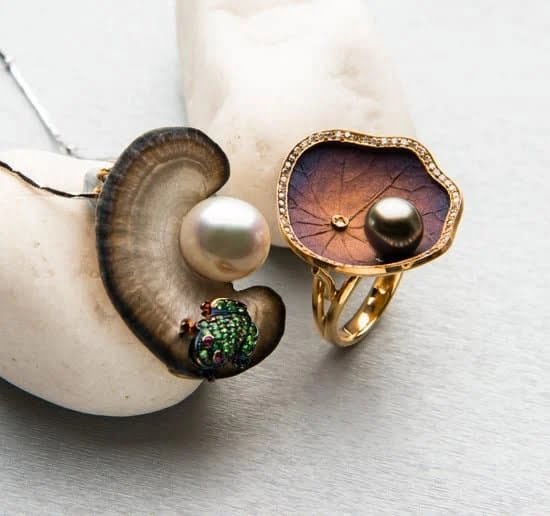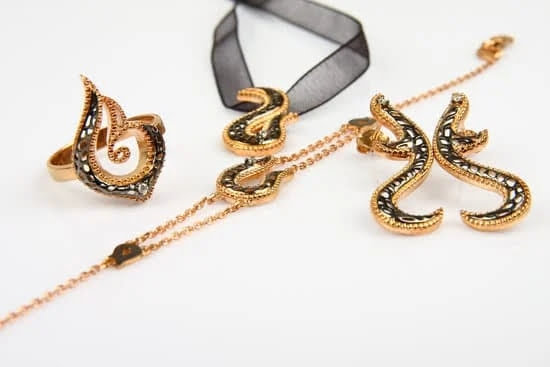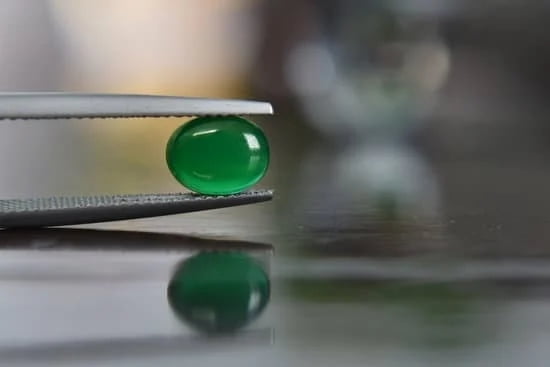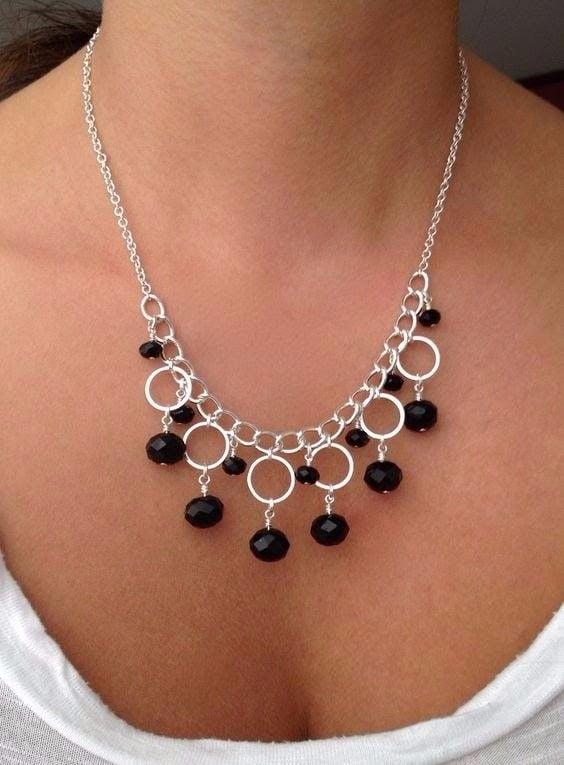Introduction
There are many reasons to choose fake gold jewelry instead of the real thing. Fake gold jewelry looks similar in appearance to real gold, but is much cheaper and more accessible. You may also choose it because fake gold jewelry won’t tarnish or corrode and requires less maintenance than real gold jewelry. This makes it a great option for people who want to add a bit of flair to their outfit without spending too much money or limited amount of time caring for it. Furthermore, some people prefer the look of fake gold as compared to real gold jewelry due to its unique style and various color combinations that can be created by mixing other metals with the plated material. Finally, there are many craft projects where one might use faux gold to achieve a particular design aesthetic.
Gather the Supplies
In order to paint fake gold jewelry, you’ll need some supplies from your local craft or art supply store. Painting supplies include gold acrylic paint and at least two brushes of different sizes. The first brush should be small and the second a little bit larger in size, as the background part of the jewelry will require more coverage with a bigger brush. Additionally, if possible, source varnish specifically designed for metal surfaces so that you can give your fake gold jewelry an extra glossy coat when finished.
Jewelry tools necessary to paint fake gold jewelry include tweezers, pliers, scissors and wire cutters. These will be used to shape and prepare the piece before painting. Ensure that all tools are clean prior to use in order to maximize accuracy during preparation. For particularly intricate items such as pendants or earrings, you may also want to source a magnifying glass so that all of the details can be properly seen and worked on safely.
Prepping the Jewelry
Before you start painting your fake gold jewelry, it is important to properly prepare the jewelry for a successful paint job. First, clean the piece with soap and water, making sure to use a soft cloth or brush to gently scrub away any dirt or residue from the surface. Make sure all of the soap has been washed off before proceeding to the next step. After cleaning the jewelry, use sandpaper to lightly scuff around the entire surface in order to give the primer something to cling onto. Finally, apply an even coat of primer across the entire surface of the jewelry, taking care to avoid large puddles and drips along crevices and edges. After drying for a few hours, your jewelry is now ready for painting!
Painting the Jewelry
Step 1: Clean the jewelry. Before you start painting, you need to make sure the jewelry is clean and free of any dirt and grease. Use an old toothbrush and mild detergent, like dish soap, to scrub the pieces clean. Rinse with warm water and dry thoroughly with a soft cloth.
Step 2: Prime the jewelry. Once the pieces are dry apply a coat of primer using a small detail brush. Allow it to dry completely before moving on to the painting phase.
Step 3: Mix your colors. When it comes to achieving a realistic gold look, a combination of colors is needed instead of just one shade or hue. You will want to mix a yellow-gold tone with an orange-gold tone for this project. You can also use a small amount of white paint to lighten or brighten up your colors if desired.
Step 4: Start painting! Using very small detail brushes, begin application of your gold colors onto each piece in random strokes or swirls until all portions have been covered adequately. Be sure to blend seamlessly so that transitioning from one color to the next is done smoothly without any visible lines or blemishes in between them both. Allow your painted jewelry time to dry completely before moving on further steps in this process.
Step 5: Seal your masterpiece! Now that the colors are blended flawlessly and the jewelry is dry, it’s time to seal everything in place by applying a coat of clear sealant spray over top of everything else layered on it thus far (including primer). This will help prevent chipping and fading over time as well as provide an extra layer of protection against scratches and other damage that may occur during everyday wear and usage of these handmade masterpieces!
Finishing the Piece
Once the painted gold jewelry has dried for a few hours, it’s time to apply a protective topcoat. You can use any type of lacquer or varnish, taking care to ensure it is intended for use with acrylic paints. Make sure the bottle you are using is labeled as ‘non-toxic’.
Begin by shaking the bottle of lacquer or varnish very well, and then use a natural bristle paintbrush to apply a thin and even layer over your jewelry piece. Once again, allowing drying time between coats will help make sure it gets applied evenly and will last longer than if rushed. When applying other coats of lacquer or varnish wait a minimum of 24 hours before adding more layers. This helps the protection stick better and makes the finished product look more professional. Generally speaking, 3-5 coats should do the trick in order to achieve an adequate level of coverage and protection on your jewelry piece.
After all of the layers have been applied and allowed to dry completely, gently buff away any imperfections with a soft cloth. This gives your piece an extra glossy finish as well as helping it to stand up better against environmental factors that could otherwise cause damage over time.
Design Ideas
Painting fake gold jewelry can be a fun and creative way to add unique designs and accents to plain pieces. When deciding on a design, there are a few basic steps to follow. First, you will need to select your paint colors and pick out the right type of paint for the material you plan on using. Acrylic paints work well for most metals, but some materials like plastic or glass may require an enamel-based paint. Once you have your paints ready, decide on your design plan. This could include creating intricate patterns with geometric shapes in various colors or creating monochromatic brushstrokes with more neutral hues. You could even try free-motion painting with bright colors for a bold statement piece. Once the base layer is finished drying, seal the paint with a clear coat of either resin or an exterior-grade polyurethane for extra durability. With these simple steps and some creativity, painting fake gold jewelry can bring life to any faux gemstone and make it one of a kind!
Troubleshooting
Issue: Too Many Brush Strokes/Texture
Solution: To avoid having too many brush strokes or texture, use a very small, soft brush and lightly dab the jewelry with paint. If needed, go in with a second coat to even out any unwanted texture.
Issue: Paint is Not Sticking
Solution: When painting fake gold jewelry, be sure to clean it first. This will help the paint adhere to the surface better. You can clean it with rubbing alcohol or a mild soap and water. Let it dry thoroughly before painting.
Issue: Color is Too Dull
Solution: To ensure your fake gold looks as bright and glossy as possible, apply two coats of paint and allow sufficient drying time between each one. The second coat will add brightness to your fake gold. You may also want to consider using metallic or pearlescent paint for optimal results.
Conclusion
Painting fake gold jewelry is a simple and affordable way to add a touch of glamour to your wardrobe. Using basic supplies including metallic acrylic paint and a small brush, you can transform ordinary pieces into superior looking accessories. After cleaning your jewelry and prepping the surface, start by priming it with a coat of spray paint. Then follow the manufacturer’s instructions for using gold acrylic paint, keeping in mind that multiple coats may be necessary to achieve the desired shade. Finally, seal your jewelry with a clear gloss for extra shine and luster. With patience and practice, you’ll be able to create truly beautiful pieces you can be proud of!

Welcome to my jewelry blog! My name is Sarah and I am the owner of this blog.
I love making jewelry and sharing my creations with others.
So whether you’re someone who loves wearing jewelry yourself or simply enjoys learning about it, be sure to check out my blog for insightful posts on everything related to this exciting topic!





